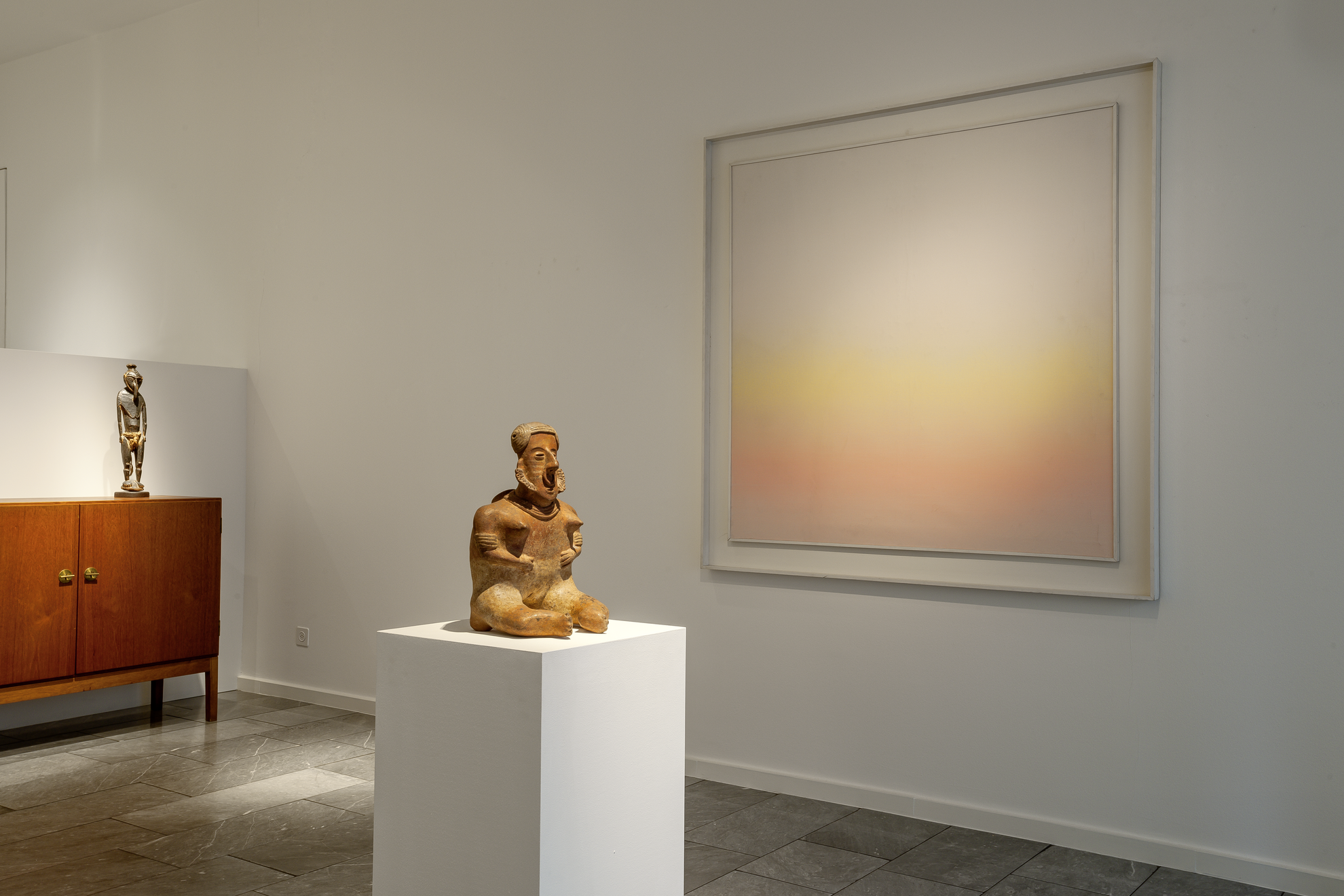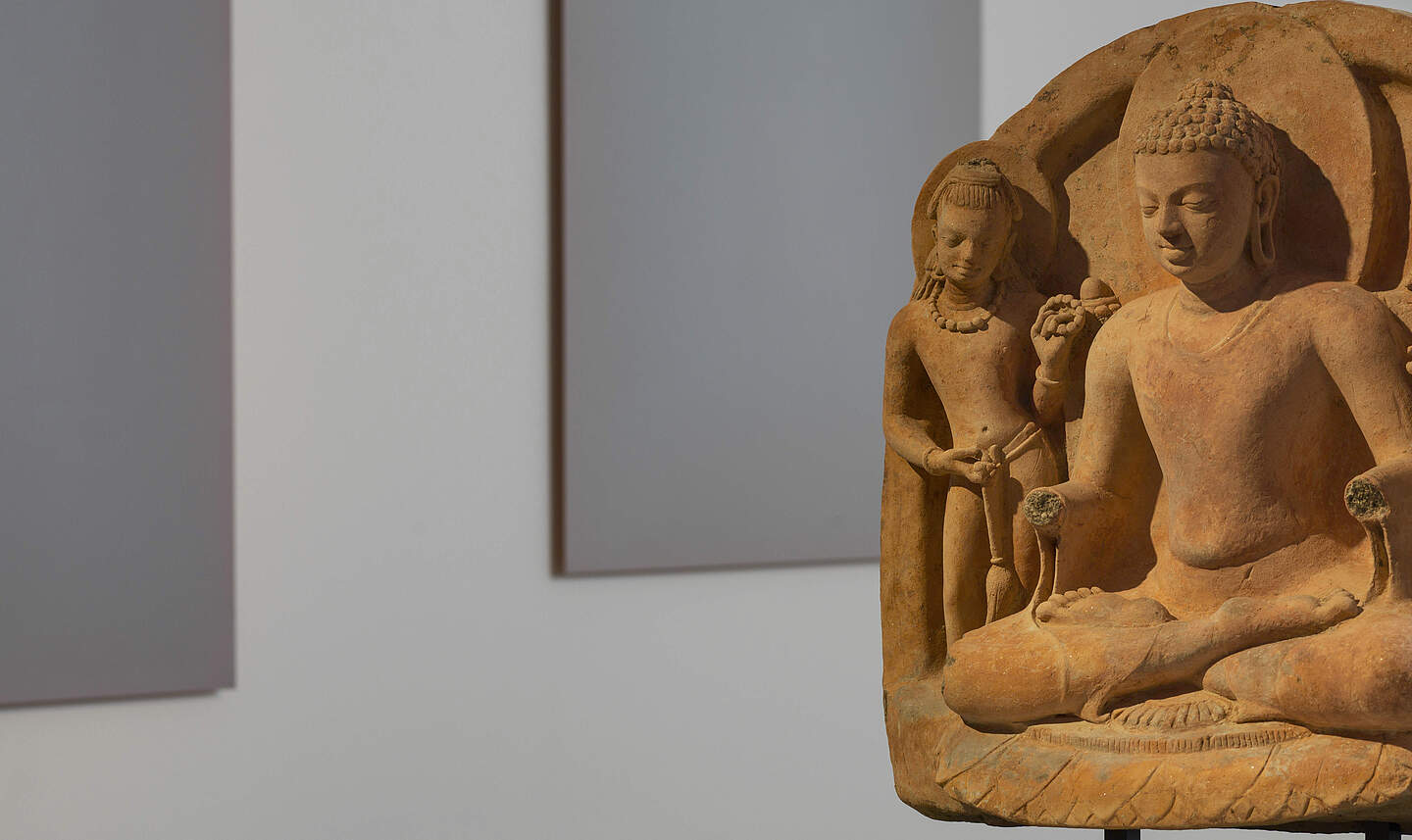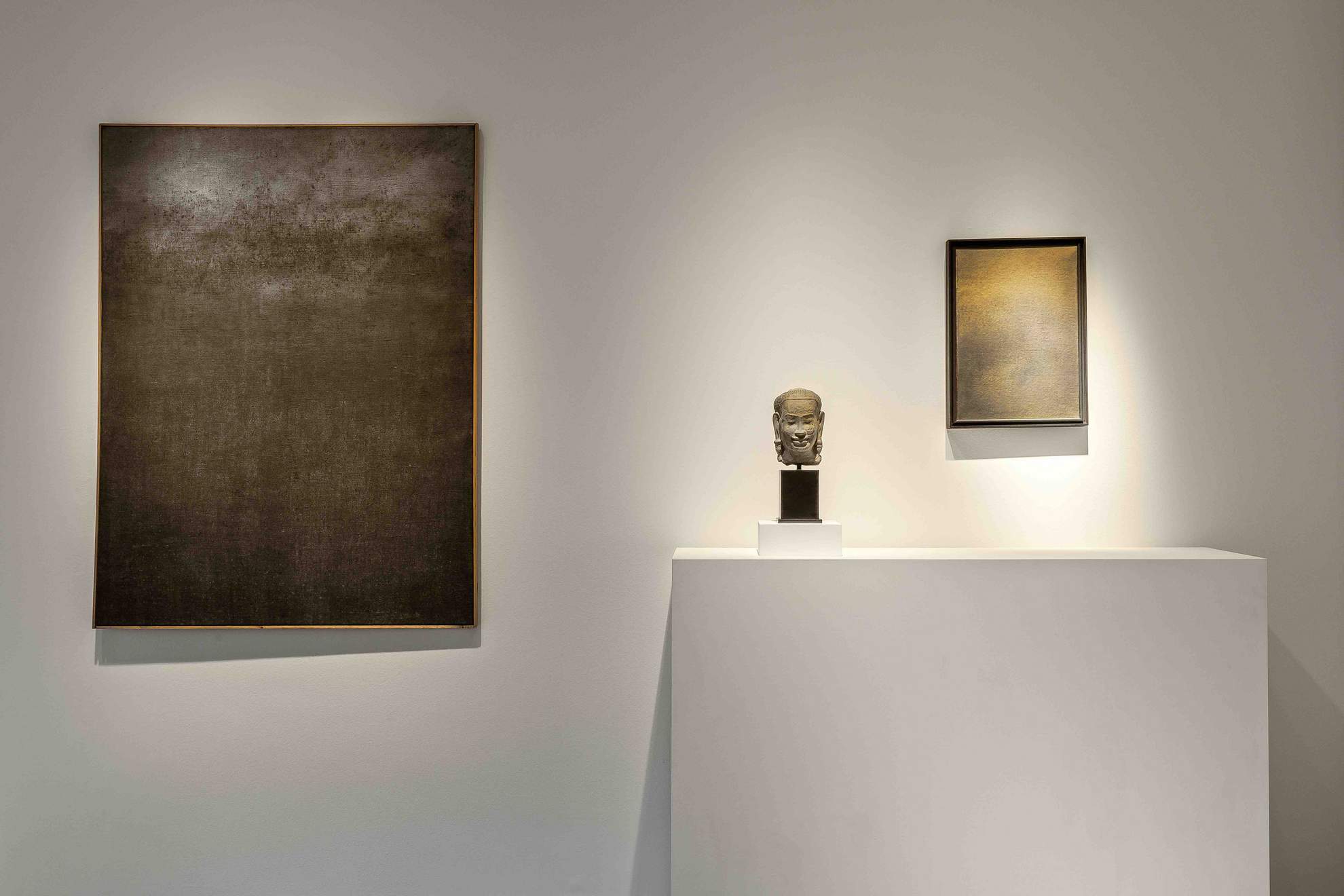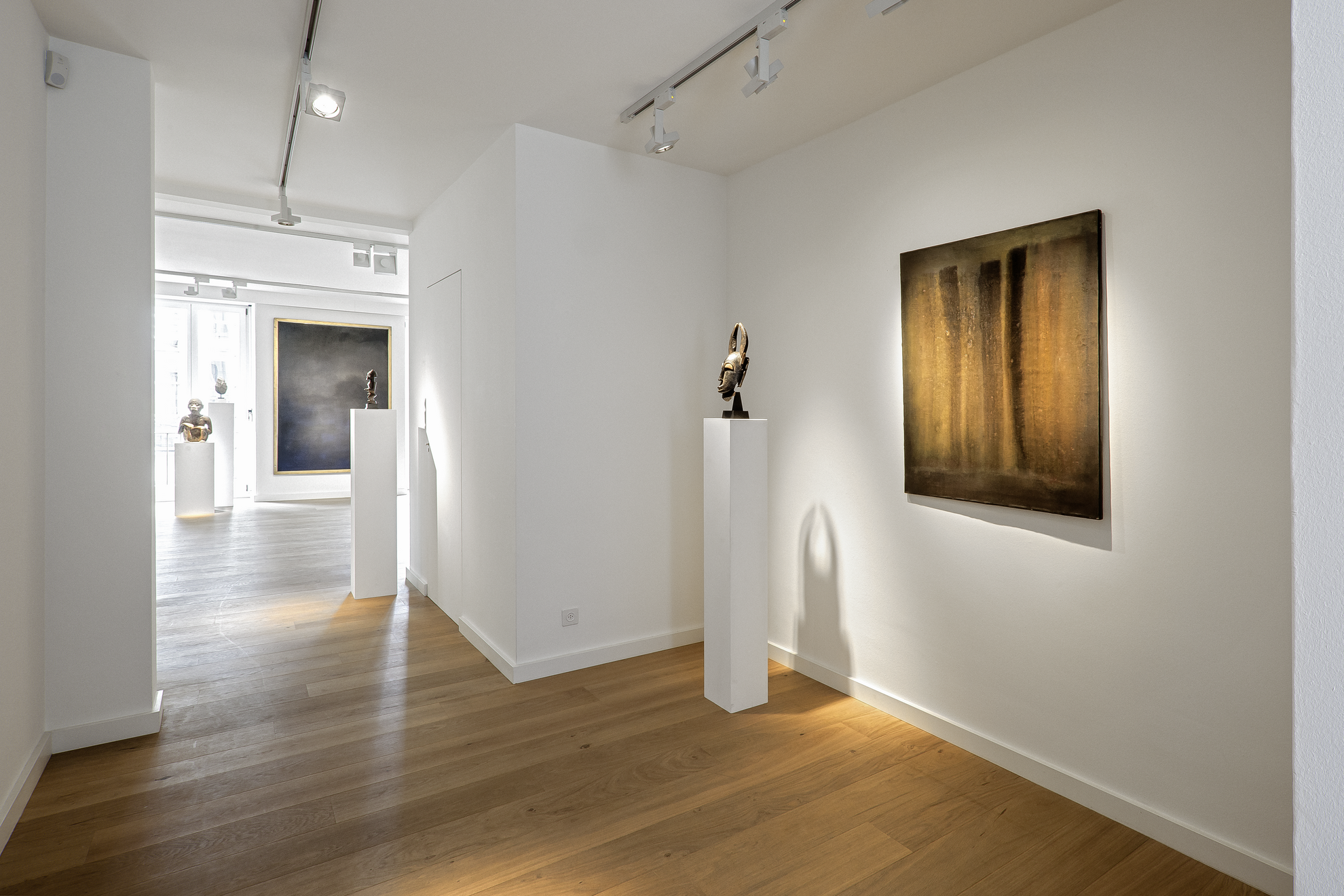
Jef Verheyen
Color, Light & Vision - Works of the 50's and 60's
Zurich
Seeing is feeling with the eyes. (Jef Verheyen) Nuanced and almost iridescent color gradients are characteristic for the paintings of the Flemish artist Jef Verheyen (1932 - 1984).
He [Fontana] also took over
painting methods from me.
That was a mutual give and take.
[...] It was certainly no coincidence
that we immediately
got along so well
[Fontana, Manzoni, Düsseldorf scene].
Jef Verheyen
Close observation and an almost meditative inner calm are necessary for the viewer to encounter Verheyen's paintings in all their depth. The "peintre flamant," who completed a classical painter's training at the Royal Academy of Antwerp in the early 1950s, left behind only a comparatively narrow oeuvre; he called himself his paintings panchromatic works that encompass all colors. His painting style almost completely erases any materiality of color and brush. The subtle artworks are the most impressive because Jef Verheyen had only limited vision due to a congenital eye defect. The constant search for metaphysical insights is, so to speak, the program of the paintings of the exceptional artist, created in countless, glazed layers of color. They bear titles such as Sun or Flemish Landscape. Light and color as means of perception, a physical as well as spiritual visual experience are the central elements of his art. Constantly experimenting, Verheyen approaches the very similar ideas of the "ZERO Group", active in the Rhineland with the artists Heinz Mack, Otto Piene and later Günther Uecker.
In the late 1950s, Verheyen became acquainted with Lucio Fontana, Piero Manzoni and Uecker. He established correspondence with Yves Klein and became an important
link in the ZERO group. It was this notable post-war movement with which Verheyen identified artistically. This led to important joint international exhibitions and also to collaborative artworks (e.g. with Lucio Fontana, Hermann Goepfert or Englebert van Anderlecht). We were more interested in painting that activated consciousness. The four of us - Fontana, Yves Klein, Manzoni and I - opposed it [Tachism & Informel] with a collective idea that had a lot to do with our friendship. (Verheyen, 1973) The lively exchange with his artist colleagues was always an important source of inspiration and stimulation for Verheyen's work: "He [Fontana] also took over painting methods from me. That was a mutual give and take. [...] It was certainly no coincidence that we immediately got along so well [Fontana, Manzoni, Düsseldorf scene].
We pursued the same ideas and communicated a lot through letters. Each of us was surprised to learn that someone at the other end of Europe was pursuing similar ideas and that the artistic results also showed analogies. Lucio Fontana - although himself considerably older than his Flemish friend - spoke of Verheyen as his father. In addition to his art, he particularly appreciated the intellectual and philosophical way in which the Belgian was able to put into words not only his own work. The special exhibition Jef Verheyen. Color, Light & Vision presents representative works from the 1950s and 1960s on canvas and paper. In this way, the presentation pays tribute to the oeuvre of this painter, which has received little attention to date and is hardly present on the art market. The saleable works of Jef Verheyen are supplemented by Galerie Dierking with works from private collections.
Jef Verheyen
Color, Light & Vision - Works of the 50's and 60's
Zurich
He [Fontana] also took over
painting methods from me.
That was a mutual give and take.
[...] It was certainly no coincidence
that we immediately
got along so well
[Fontana, Manzoni, Düsseldorf scene].
Jef Verheyen
Seeing is feeling with the eyes. (Jef Verheyen) Nuanced and almost iridescent color gradients are characteristic for the paintings of the Flemish artist Jef Verheyen (1932 - 1984).
Close observation and an almost meditative inner calm are necessary for the viewer to encounter Verheyen's paintings in all their depth. The "peintre flamant," who completed a classical painter's training at the Royal Academy of Antwerp in the early 1950s, left behind only a comparatively narrow oeuvre; he called himself his paintings panchromatic works that encompass all colors. His painting style almost completely erases any materiality of color and brush. The subtle artworks are the most impressive because Jef Verheyen had only limited vision due to a congenital eye defect. The constant search for metaphysical insights is, so to speak, the program of the paintings of the exceptional artist, created in countless, glazed layers of color. They bear titles such as Sun or Flemish Landscape. Light and color as means of perception, a physical as well as spiritual visual experience are the central elements of his art. Constantly experimenting, Verheyen approaches the very similar ideas of the "ZERO Group", active in the Rhineland with the artists Heinz Mack, Otto Piene and later Günther Uecker.
In the late 1950s, Verheyen became acquainted with Lucio Fontana, Piero Manzoni and Uecker. He established correspondence with Yves Klein and became an important
link in the ZERO group. It was this notable post-war movement with which Verheyen identified artistically. This led to important joint international exhibitions and also to collaborative artworks (e.g. with Lucio Fontana, Hermann Goepfert or Englebert van Anderlecht). We were more interested in painting that activated consciousness. The four of us - Fontana, Yves Klein, Manzoni and I - opposed it [Tachism & Informel] with a collective idea that had a lot to do with our friendship. (Verheyen, 1973) The lively exchange with his artist colleagues was always an important source of inspiration and stimulation for Verheyen's work: "He [Fontana] also took over painting methods from me. That was a mutual give and take. [...] It was certainly no coincidence that we immediately got along so well [Fontana, Manzoni, Düsseldorf scene].
We pursued the same ideas and communicated a lot through letters. Each of us was surprised to learn that someone at the other end of Europe was pursuing similar ideas and that the artistic results also showed analogies. Lucio Fontana - although himself considerably older than his Flemish friend - spoke of Verheyen as his father. In addition to his art, he particularly appreciated the intellectual and philosophical way in which the Belgian was able to put into words not only his own work. The special exhibition Jef Verheyen. Color, Light & Vision presents representative works from the 1950s and 1960s on canvas and paper. In this way, the presentation pays tribute to the oeuvre of this painter, which has received little attention to date and is hardly present on the art market. The saleable works of Jef Verheyen are supplemented by Galerie Dierking with works from private collections.
IMPRINT
© DIERKING 2025



